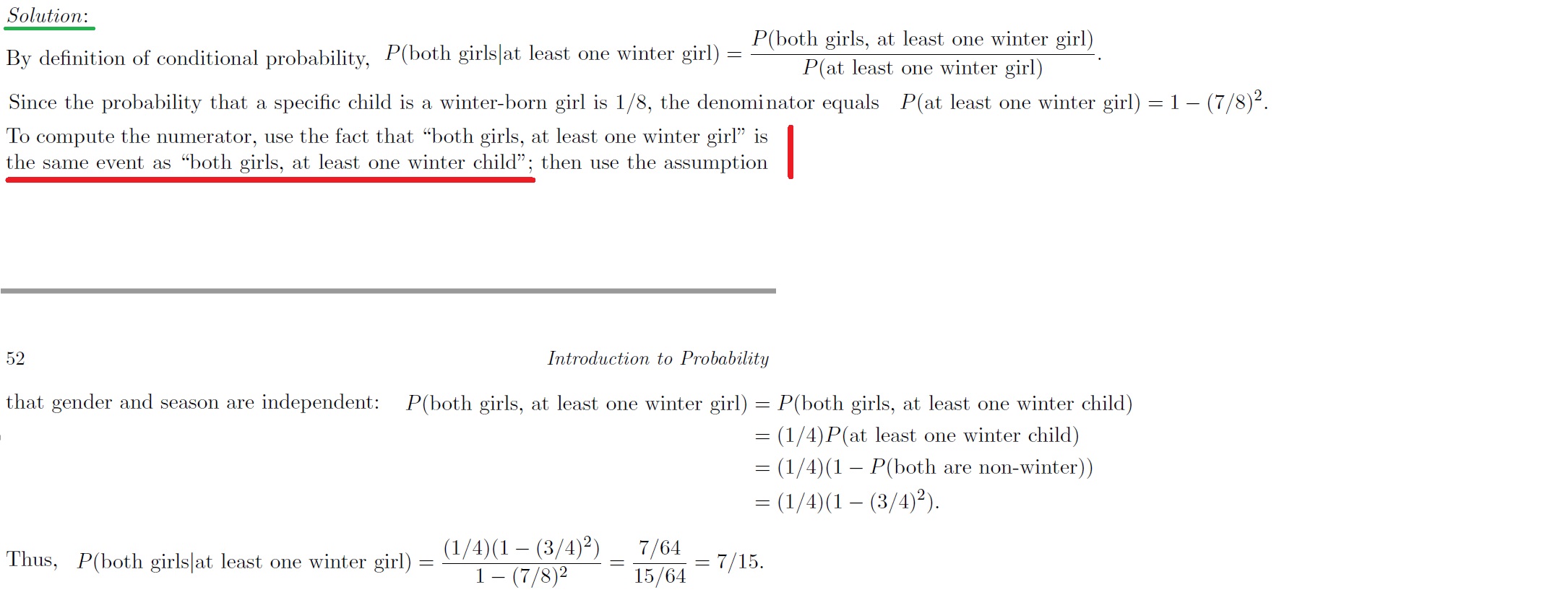What does "the fact that "both girls, at least one winter girl" is
the same event as both girls, at least one winter child"" imply about the problem statement below that posited merely girls? I feel that this fact lets us breadthen the problem statement. Can it?
[Adam Bailey's answer](https://math.stackexchange.com/a/198755) details the calculations.
>### Example 2.2.7 (A girl born in winter).
>A family has two children. Find the probability
that both children are girls, given that at least one of the two is a girl who
was born in winter. In addition to the assumptions from Example 2.2.5, assume
that the four seasons are equally likely and that gender is independent of season.
(This means that knowing the gender gives no information about the probabilities
of the seasons, and vice versa; see Section 2.5 for much more about independence.)
>
>
>At first this result seems absurd! In Example 2.2.5, the result was that the conditional
probability of both children being girls, given that at least one is a girl, is
1/3; why should it be any different when we learn that at least one is a winter-born
girl? The point is that information about the birth season brings at least one is
a girl" closer to a specific one is a girl". Conditioning on more and more specific
information brings the probability closer and closer to 1/2.
>
>For example, conditioning on at least one is a girl who was born on a March 31
at 8:20 pm" comes very close to specifying a child, and learning information about
a specific child does not give us information about the other child. The seemingly
irrelevant information such as season of birth interpolates between the two parts of
Example 2.2.5. Exercise 29 generalizes this example to an arbitrary characteristic
that is independent of gender. □
Blitzstein. *Introduction to Probability* (2019 2 ed). pp 51-2.


















